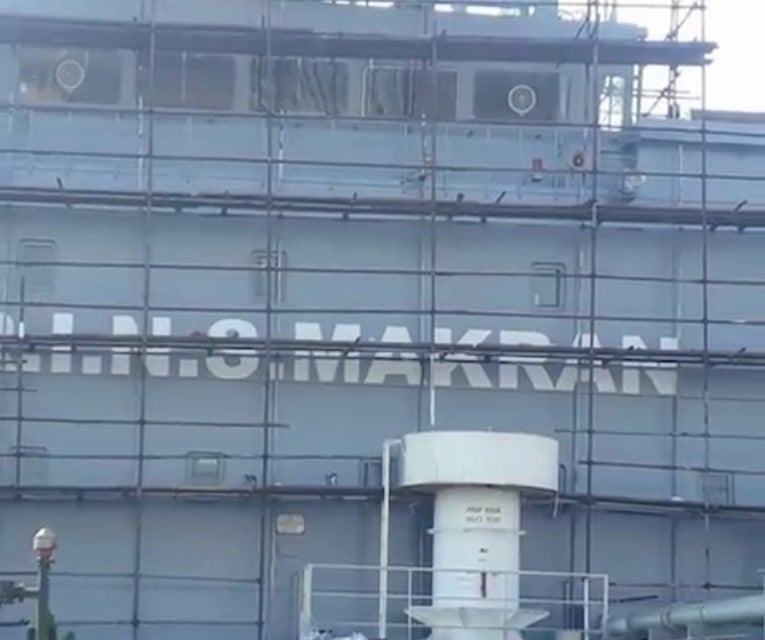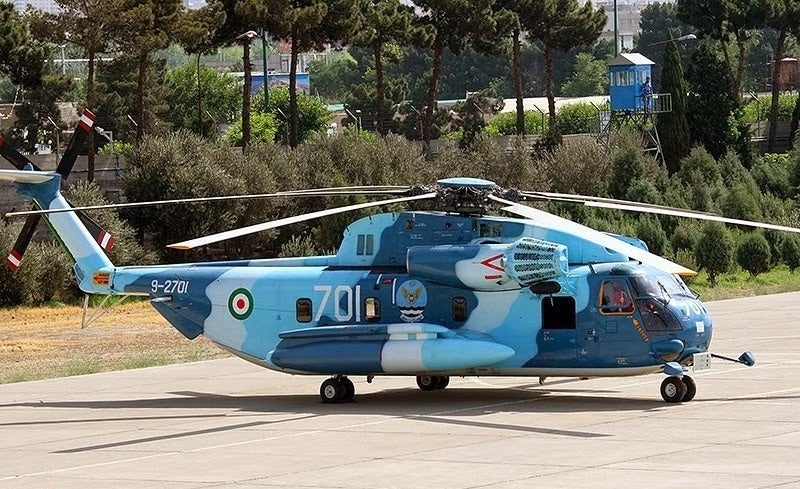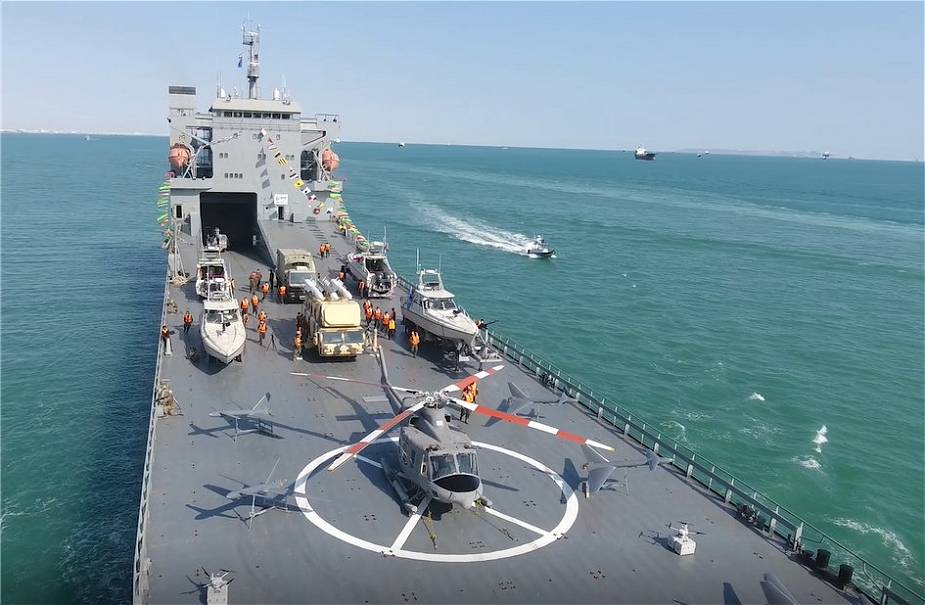Iranian Navy Preparing to Launch Another Expeditionary Warship
The commander of the Iranian Navy has said that they plan to soon launch a new ship designed to support Iran’s international operations and act as an forward operating base.
According to naval analyst H.I. Sutton, the Iranian navy is about to launch their latest addition, the I.R.I.N.S Makran. The ship is a conversion of a tanker and has been reequipped with anti-ship and anti-aircraft missiles to give it some defensive and offensive capabilities.

However, the purpose of the ship is not to conduct combat operations itself, but to support other forces in their own missions. In this way the Makran is analogous to the U.S. Navy’s Expeditionary Sea Base (ESB).
To this end the ship has been converted to offer copious storage facilities for supplies and fuel that can be used by Iranian naval assets. Notionally this is to support missions such as Iran’s contribution to international anti-piracy operations in the Red Sea.
But the Makran also has the ability to operate up to six helicopters including CH-53Ds (according to the Iranian Navy) and UAVs. It also can carry and operate fast attack craft that have been a regular feature in Iran’s harassment of vessels.

The new ship is the second such vessel to enter Iranian service recently. On 19 November, the Iranian Islamic Revolution Guards Corps Navy (IRCGN) took delivery of the Shahid Rudaki. The IRCGN is separate from the regular Iranian Navy and is designated as a terrorist organisation by the United States and a number of Western countries.
On the surface the reason for Iran’s building of this particular type of vessel is confusing. Ships acting as ESB are very exposed to enemy action, being equipped to deal with minor threats at best and easy prey for a dedicated warship. As such, ESBs generally are expected to act in areas where they are protected by friendly air-and-naval forces.
The Iranian navy doesn’t have much in terms of long term naval projection powers to protect such vulnerable ships. But experience has demonstrated to the Iranians that they can largely operate these vessels without too much impediment.
Although the two new vessels are “official” naval ships, the Iranians have been operating at least one vessel, the Saviz, for several years in the area. In 2017 the Saudi’s alleged that this ship has been involved in supporting Houthi forces in the Yemeni Civil War.
The successful attacks by Houthi anti-ship missiles and suicide boats on ships of the Arab coalition fighting in Yemen led to the Saudis stating that these support ships also provide critical information for directing attacks against their naval forces.
Certainly the operations of the Saviz, and other vessels, indicates that the Iranians have learnt the value of these ships not just as supply bases but as communication hubs and intelligence gathering assets. With that in mind, the fielding of a legitimate naval equivalent, with all the implications an attack upon it would represent, starts to make a lot more sense.

